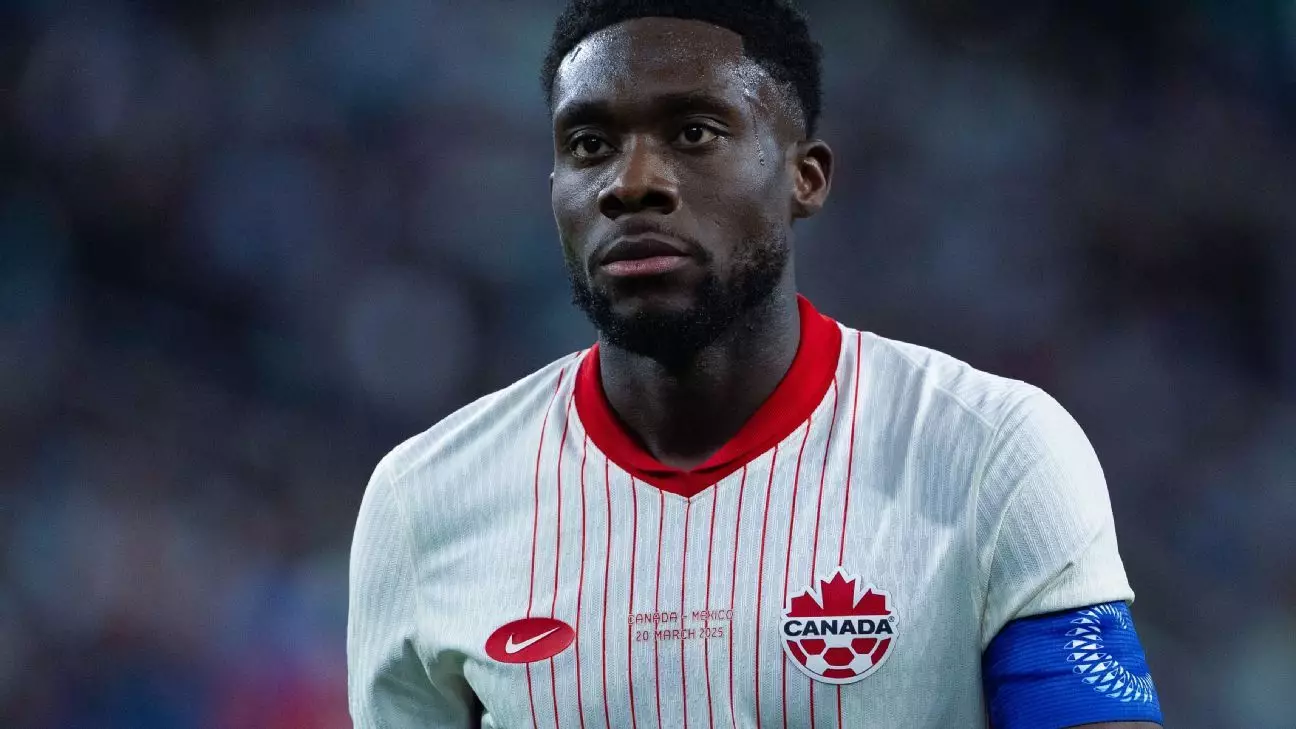Alphonso Davies, a beacon of hope for Canadian soccer, recently faced a significant crisis following an injury during the Concacaf Nations League finals. His grievous knee injury raised a myriad of questions about player welfare and the responsibilities of national associations. After sustaining a torn anterior cruciate ligament along with additional knee trauma during Canada’s crucial match against the United States, the soccer world braced itself for the implications of this setback. As Bayern Munich announced that Davies would be sidelined for an extended period, the fallout began to reveal deeper tensions between the club and the Canadian Soccer Federation.
The real story, however, does not solely hinge on the player’s physical condition but rather on the managerial oversight and medical practices that surround elite athletes’ health. Bayern Munich’s CEO, Jan-Christian Dreesen, has publicly criticized Canada’s handling of Davies’s injury, characterizing the decisions made as “grossly negligent.” This allegation, stark in its ramifications, hinges on the assertion that Davies was sent on a long international flight without proper medical assessment, which leads to bigger questions about protocols followed by the national team staff.
Protocols vs. Perceptions: A Showdown of Accountability
In response to the uproar, Canada Soccer has taken a formidable stance, defending its actions and asserting that medical protocols were indeed followed. They emphasized their commitment to player well-being by pointing to documented care processes and communication that transpired during the tournament. Nonetheless, the fact that these protocols are being called into question by a major club like Bayern Munich raises critical concerns regarding the overall structure of care provided to players on the national stage.
As an outsider observing this dispute, it’s clear that a central question is the delineation of responsibility. At what point does the duty of care shift from the national federation to the club, particularly in the high-pressure environment of international competitions? What happened in Davies’s case is an uncomfortable reminder that despite our admiration for athletic feats, the human aspect of deportiva can often be overlooked in the hustle for national pride and success.
The ramifications of Davies’s injury extend beyond individual welfare; they reflect how systemic flaws within organizations can lead to dire consequences. The international scrutiny faced by Canada Soccer highlights the vital need for rigorous and transparent protocols governing player health and an understanding that such systems should be collaborative in nature.
A Call for Enhanced Collaboration Between Clubs and Federations
Notably, change might be on the horizon as discussions emerge between the involved parties. After initial criticism, Davies’s agent transitioned to a more conciliatory tone, pointing towards respectful discussions with Canada’s head coach, Jesse Marsch. This dialog represents a step towards collaboration that could foster harmonized approaches to player care, benefitting all stakeholders involved.
The potential for positive outcomes lies in recognizing that such injuries call for united front rather than hostility. Soccer is, after all, a shared venture where clubs and federations must work hand-in-hand to safeguard athletes. If this incident serves as a catalyst for reform, it could lead to clearer communication channels, improved medical protocols, and ultimately a league of concerned and capable arms wrapped around our athletes.
Furthermore, beyond immediate concerns, this incident opens the floor for broader conversations about how player welfare is prioritized globally. It’s a moment ripe for reflection on what constitutes adequate care in high-stakes environments. By expanding these conversations across various leagues and federations, a more standardized expectation can emerge, potentially reshaping how injuries are managed from the grassroots to elite levels.
Looking Ahead: The Future Beyond Physical Injury
As Davies concentrates on rehabilitation, he’s not just an icon of talent but a symbol of the need for systemic improvement in athlete care. This incident possesses the potential to illuminate the path for future athletes navigating similar challenges within the sport. It offers a glimpse into the urgency of evolving procedures that prioritize the individual behind the athlete—someone whose career and well-being hang in the balance.
As we delve deeper into discussions surrounding best practices for national and club teams, the hope remains that Alphonso Davies’s experience catalyzes actionable change rather than perpetuating a cycle of blame. The ultimate goal must always be to protect and nurture our stars while fostering environments where athletes can thrive without fear of neglect or mismanagement. In the grand narrative of sports, it is the human spirit that deserves unwavering protection and advocacy.

